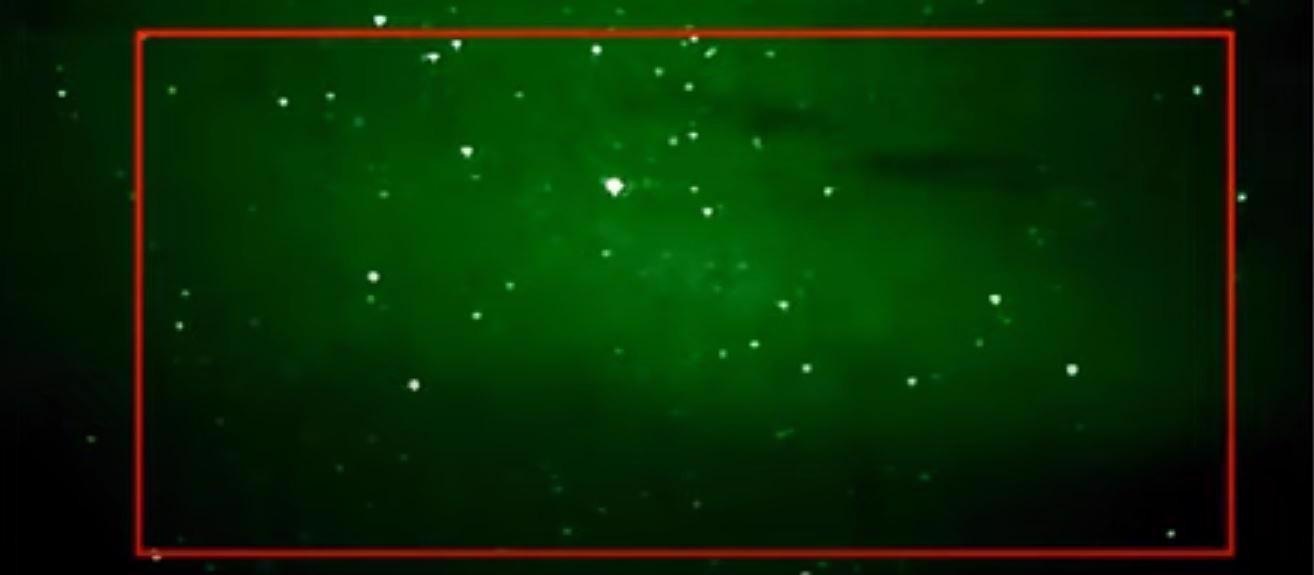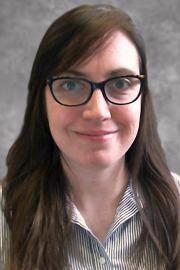AZoQuantum speaks with Dr. Allison N. Jaynes from the University of Iowa. Allison is part of a group of physicists who have found a previously undiscovered phenomenon called ‘diffuse auroral erasers’ while analyzing a video of auroras recorded in 2002.
Can you tell our readers about your recent research?
We have found a type of aurora that hasn't been reported on before. When you think of aurora, you typically think of the really pretty picture that you see on a calendar with the green arcs across the sky, but there's actually a whole bunch of different types of aurora, and some of them are really dim and some of them are diffuse.
What we found here is a type that is pretty dim and diffuse, but what happens is that a patch seems to get a little bit brighter and then erase the background behind it, so then there's a hole where it used to be. It looks like someone basically took a big pencil eraser and just smudged out a particular patch. Then over the course of 10 or 20 seconds, that patch fills back in slowly up to the background level again. Then sometime later, in a different part of the sky, another patch suddenly grows bright and then disappears as if someone erased it. We now use the term 'diffuse auroral erasers' to describe this type of aurora.

In terms of the video footage, you had mentioned, "I've had some ideas how it could be analyzed, but I hadn't done that yet. I handed it to Riley and he went much further with it by figuring out his own way to analyze the data and produce some significant conclusions." How did Riley analyze it?
Riley, a graduate student on a NASA fellowship, took that data and he digitized the video footage. He then looked at individual patches where this eraser feature happens. He identified all of the patches that we had for that particular segment of our video for that patch of the sky that we were looking at. He then went through a statistical study and found the times in which all those patches got bright and then the times in which they dropped out and had the eraser feature. Then they filled back in over time, back up to the background level.
He did this for all the patches, and we saw the same behavior in all of these different patches. There was a sudden bright spike, drop out to this black eraser portion, and then this slow refilling, so we had the same trend in all of these different time series for all these patches. We knew some process created all of these and they had a very similar timescale.
What are some of the processes that could be driving this phenomenon?
We think that this is something happening out in space. Near-Earth space is connected to the atmosphere above our heads through magnetic field lines. Some of the processes that create aurora happen close to above our heads, but some of the processes happen out in space, pretty far away from the planet. We think this is one of the times when the process is happening out in space, away from Earth.
So we're viewing the screen above our heads as an image of what's happening out in space. It's a nice way to connect what's going on in near-Earth space to what's going on in the atmosphere or aurora. What we think is happening is a particular type of interaction out in space, which is creating these auroral features in these very specific patches.

Image Credit: David Knudsen University of Iowa/YouTube
In terms of finding out more about Earth, what is the importance of understanding auroras and what can the study of auroras tell us about Earth?
In terms of understanding auroras, auroras are basically a manifestation of what we call space weather. That's anything that affects the space around Earth or our atmosphere, or even down to ground level where humans live and work. It's all driven by the Sun, originally, but then some complicated things happen between the Sun and the Earth. We can have flares that impact the Earth and solar storms that impact the Earth. Auroras are just one part of that impact.
By studying auroras, what we're actually studying is the connection between the Earth and the Sun. Something like this here, this diffuse auroral eraser is a very small part of that system, but every little piece that we can understand gives us a better idea of how the overall system works. So it's kind of like studying a small building block of a process to understand the whole thing.
Physicists describe new type of aurora
How could these findings help to understand the auroras in other planets?
This is a great question. We don't know as much as we'd like to about auroras on other planets. We certainly know that they exist, and any magnetized planet is going to have auroras. What we're doing here is figuring out, in this case, what's going on in space that's creating these auroras, and I think that can be extended to the processes that we might see on other planets once we get better observations. This also extends out to exoplanets because there's a high probability that planets in other star systems have aurora. So understanding auroras, in general, is a great way to go about looking towards habitability or exoplanets in general.
What's next for you and the team at the University of Iowa?
There's a lot going on. We've got several CubeSat missions that we're working on. These are very small satellites that get put up, pretty low cost, up into space and can do some great measurements that even larger spacecraft do similarly. We're working on a couple of those missions to understand Earth's radiation belts and more about the aurora.
Where can readers find more information?
More information can be found here:
https://now.uiowa.edu/2021/05/physicists-describe-new-type-aurora
https://www.iowapublicradio.org/show/river-to-river/2021-05-14/iowa-physicists-discovers-a-new-type-of-aurora
About Dr. Allison N. Jaynes
 Professor Allison Jaynes joined the faculty at the University of Iowa in 2017 after receiving a Ph.D. from the University of New Hampshire and working as a researcher at the University of Colorado Boulder. Her research focuses on inner magnetosphere particle dynamics, including the ring current and radiation belts and how they connect to atmospheric and auroral physics.
Professor Allison Jaynes joined the faculty at the University of Iowa in 2017 after receiving a Ph.D. from the University of New Hampshire and working as a researcher at the University of Colorado Boulder. Her research focuses on inner magnetosphere particle dynamics, including the ring current and radiation belts and how they connect to atmospheric and auroral physics.
She is currently serving as Co-Lead on the SCOSTEP PRESTO committee for predictions of the Sun-Earth environment, as a member of the AGU Nomination Task Force, and as a member of the National Academies study on Increasing PI Diversity and Inclusion in the Leadership of Competed Space Missions. She previously co-chaired the Geospace Dynamics Constellation (or GDC) Science and Technology Definitions Team for NASA.
Disclaimer: The views expressed here are those of the interviewee and do not necessarily represent the views of AZoM.com Limited (T/A) AZoNetwork, the owner and operator of this website. This disclaimer forms part of the Terms and Conditions of use of this website.